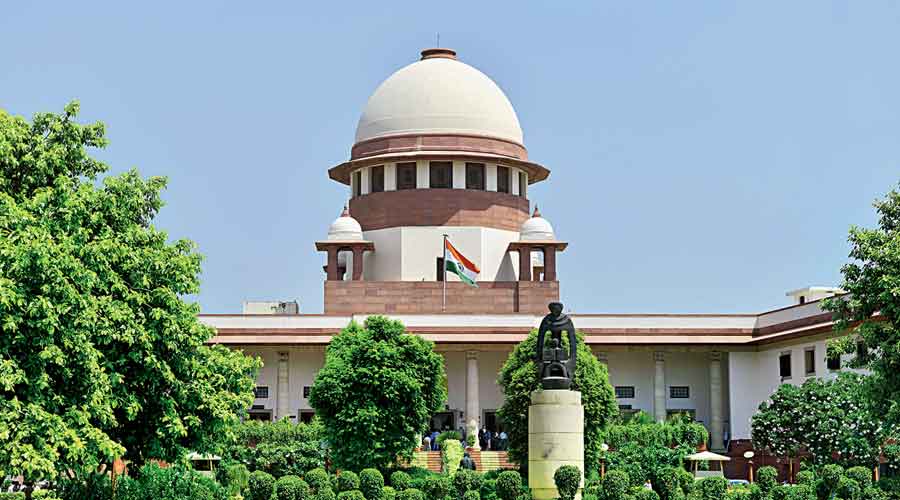Chief Justice of India N.V. Ramana on Friday announced the setting up of an “innovative” and “revolutionising” electronic system of transmission of court orders in a fast and secure manner, following complaints of delay in implementation of bail orders.
The top court said the country can no longer live in an era where pigeons were used for transmitting information as it involved the fundamental rights of prisoners’ immediate release after being ordered by a competent court.
CJI Ramana, heading a bench also comprising Justices L. Nageswara Rao and A.S. Bopanna, while announcing the new system, remarked: “In this age of information and technology we are still looking at the skies for pigeons to communicate orders.”
The court also directed that those prisoners who had been given interim bail or parole in terms of its May 7 order need not surrender until further orders.
“Prisoners are waiting for the Supreme Court orders to be sent by post. We have ordered release in some matters and they were not released since they did not receive authentic copy order. This is too much,” Justice Ramana said.
Presently, the court orders are transmitted through courier, postal service and hand delivery, leading to considerable delay. A number of advocates have also complained that their clients despite being directed to be released continue to be incarcerated in jails as the orders are not reaching the prison authorities in time.
Recently, the apex court had directed the release of 13 prisoners from Agra jail, but they were actually released only four days after the court’s order. The delay occurred apparently because the prison authorities took time to verify the authenticity of the order.
During Friday’s proceedings, Justice Ramana said the top court was contemplating a system under which bail orders are sent electronically to jail authorities, so as to facilitate their immediate release.
The Supreme Court registry was directed by the bench to prepare a detailed report of a scheme for delivery of its orders for execution to all concerned through a secure, credible and authentic channel.
Christened as Faster (Fast and Secure Transmission of Electronic Records), the innovative scheme has been conceived for the instantaneous delivery of orders passed by the apex court to prisons concerned, district courts, high courts, as the case may be, through a secure communication channel. This will save time and effort and will ensure that there are no delays in implementation of the orders passed by the Supreme Court.
The secretary-general of the Supreme Court was asked to submit a comprehensive report on formulating a scheme within two weeks.
The apex court had last year taken suo moto cognisance of congested prisons and had directed the release of prisoners on parole or interim bail on a case to case basis.
The bench, while stating that prisoners released on interim bail and parole orders need not surrender until further orders, asked states and Union Territories to place on record the criteria adopted for the release of prisoners on interim bail or parole.
The order came after senior advocate Dushyant Dave, assisting the court as amicus curiae, told the bench that there was no consolidated information on the criteria followed for the release of prisoners by the states and Union Territories.
The bench also asked the states and Union Territories to explain the availability Internet infrastructure in their respective jails so as to ensure seamless transmission of the court orders to the prison authorities concerned.
At present there are an estimated 1,339 prisons in the country housing a total of 4.60 lakh-odd prisoners.
In March last year, the apex court had directed the states and its instrumentalities to set up high-powered committees to decide on the temporary release of prisoners either on parole or bail. However, it was ordered that only those prisoners who were serving a sentence or are likely to sentenced for offences for less than seven years were to be considered for release. The committees were entrusted with the task of deciding the releases on a case to case basis.
On May 7, the top court had said there was a need to de-congest prisons across the country to prevent further spread of the Covid-19 pandemic, by grant of temporary bail or parole to a certain class of prisoners.
However, CJI Ramana heading the bench had said that the task of deciding the release of prisoners on a case to case basis should be better left to the district legal services authorities and the local district judges.
The matter would be taken up for further hearing in the first week of August.











